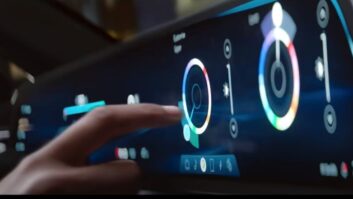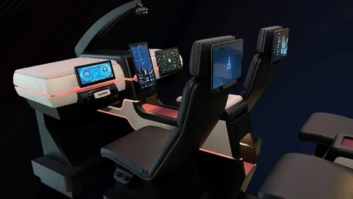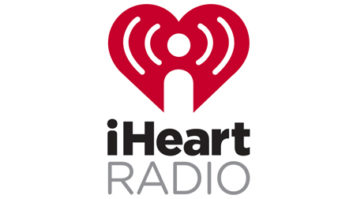 The author of this commentary is CEO of Access Europe. Access Europe launched the first mobile web browser in the 1980s and now facilitates media consumption outside of the home and in the connected car.
The author of this commentary is CEO of Access Europe. Access Europe launched the first mobile web browser in the 1980s and now facilitates media consumption outside of the home and in the connected car.
As we enter a new era of driving experiences, basic radio and rather awkward bring-your-own-devices (BYOD) are unlikely to satisfy drivers and passengers as the only forms of in-car entertainment.
Today’s consumers want access to all the services they are currently using on their phone and at home while on the road, the car original equipment manufacturers understand this and are all evaluating the best way to deliver on the potential of the connected car concept. As BMW board member, Pieter Nota, suggests: “It’s not just about having big screens in your vehicle, it’s about the content you can have on those screens and what you can offer that’s so important, in terms of things like the best possible integration of music in your vehicle.”
The combination of smart software with stable 4G and advanced 5G cellular networks unlocks a future in which the car becomes an OEM-branded communications hub that offers entertainment, BYOD access and value-added services.
The relatively low cost of shipping 4G systems in a car has already seen a rise in its inclusion in next-generation vehicles. Around 75% of cars will be connected to the internet by 2025, and connected functionality has moved up the list of features consumers value. A 2018 survey by mobile app developer Metova found over half of consumers have a car that connects to the internet through their mobile device and 33% prefer streaming audio over radio largely due to convenience.
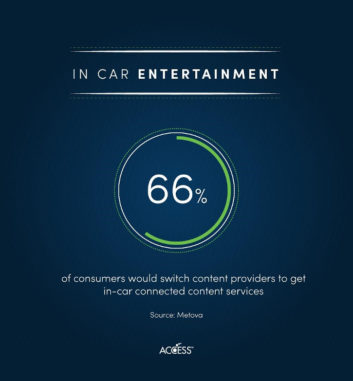
While 66% of buyers are increasingly prepared to change their entertainment service providers and content packages for one that is available in their vehicle in order to gain better connectivity and seamless access to in-car entertainment.
5G Mobility Benefits
4G networks are already widely deployed and provide a pathway for high-speed connectivity across audio, compressed video and two-way communication for BYOD and onboard apps. In Europe, new car models approved for manufacture after March of 2018 must have the 112-based eCall emergency number system installed which uses a cellular modem within each vehicle.
Although 4G is ideal for streaming low bandwidth content, the cellular connectivity that will be fitted into all new cars is likely to be 5G ready — allowing a software/SIM upgrade to take advantage of new networks as they arrive to the market.
This move to 5G is more than just a gimmick; due to the short wavelength of 5G radio signals, cars with larger and better-integrated radio antennas will be able to transfer data at higher speeds with lower congestion at lower latencies and thus offer superior reception than that of smartphones. With the car acting as a reliable 5G access point, the ability to project a Wi-Fi hotspot for occupants provides increased reliability and performance across the entire journey for drivers and passengers alike.
With connectivity built in, automobiles finally gain several real-time capabilities that aid driver comfort, safety and utility. From instant updates for traffic and route guidance, to delivering new forms of infotainment such as streaming audio services and video for rear-seat passengers. 5G means, that for example, the car’s Wi-Fi and its built-in in-vehicle infotainment (IVI) system will be able to seamlessly blend different audio inputs from national and local HD Radio, from across the world, to Spotify and to a much greater standard than streaming directly from your mobile device.
[Related: Read more articles about radio and the connected car.]
IVI acts already as a connectivity hub allowing various media formats — via Bluetooth and USB drives — to be merged into a single source of entertainment. The next-generation IVIs will also be a central access point to the services offered by the OEMs, allowing them to shape these in the most attractive and efficient way for the driver and passengers.
Infotainment Unlocked
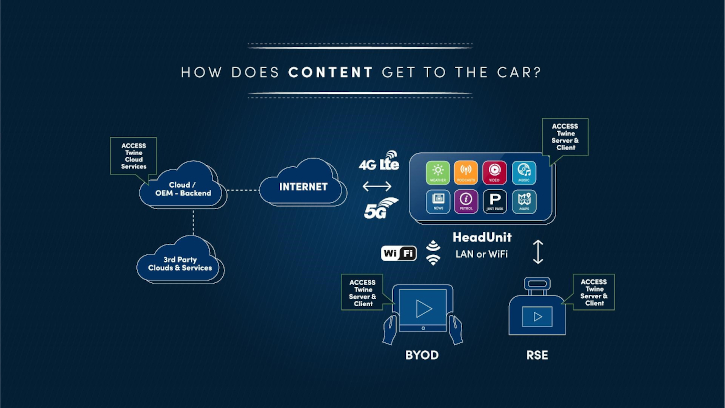 The connected car approach will also allow car brands to offer integrated infotainment services through partnerships with existing or emerging music and radio services. In a similar paradigm to the smartphone market, vehicles are likely to be a showroom with connected services that are enabled through activating pre-downloaded apps within the IVI — along with companion apps for mobile devices. Playing a key role in how car brands are perceived.
The connected car approach will also allow car brands to offer integrated infotainment services through partnerships with existing or emerging music and radio services. In a similar paradigm to the smartphone market, vehicles are likely to be a showroom with connected services that are enabled through activating pre-downloaded apps within the IVI — along with companion apps for mobile devices. Playing a key role in how car brands are perceived.
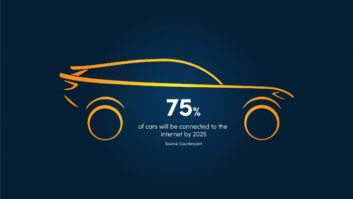 As the automotive and digital media industries continue to evolve, car manufacturers are recognizing that the key to differentiating themselves is in building digital and software-based services around the car. But unlocking the potential for creating new relationships with drivers and building customer loyalty is through entertainment and next-generation radio services. This means the way we use cars is about to change and for the audio industries, this presents a unique opportunity to evolve its offerings, enter new territory and keep its services at the heart of the driving experience.
As the automotive and digital media industries continue to evolve, car manufacturers are recognizing that the key to differentiating themselves is in building digital and software-based services around the car. But unlocking the potential for creating new relationships with drivers and building customer loyalty is through entertainment and next-generation radio services. This means the way we use cars is about to change and for the audio industries, this presents a unique opportunity to evolve its offerings, enter new territory and keep its services at the heart of the driving experience.
Comment on this or any article. Email [email protected] with “Letter to the Editor” in the subject field.








